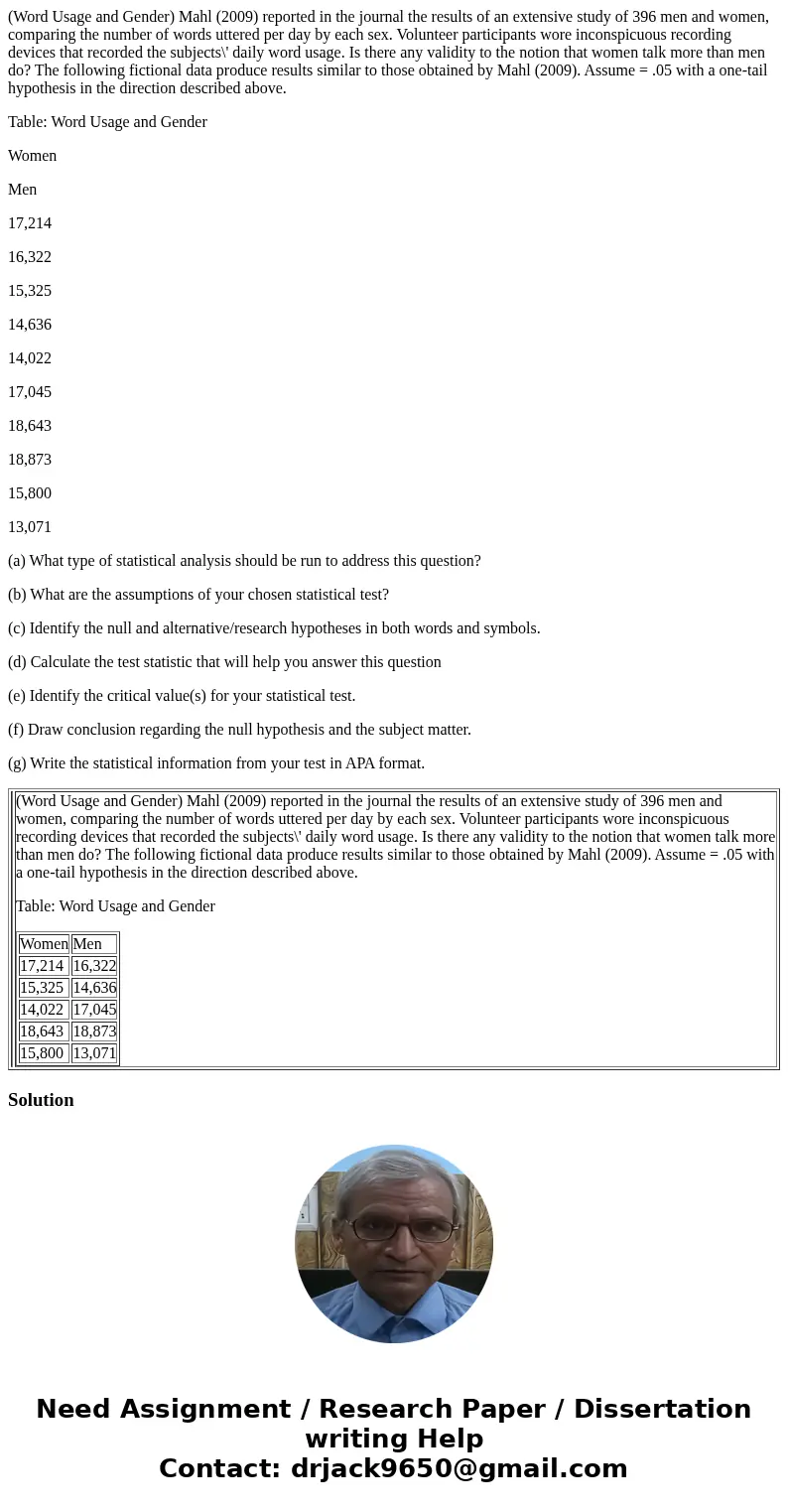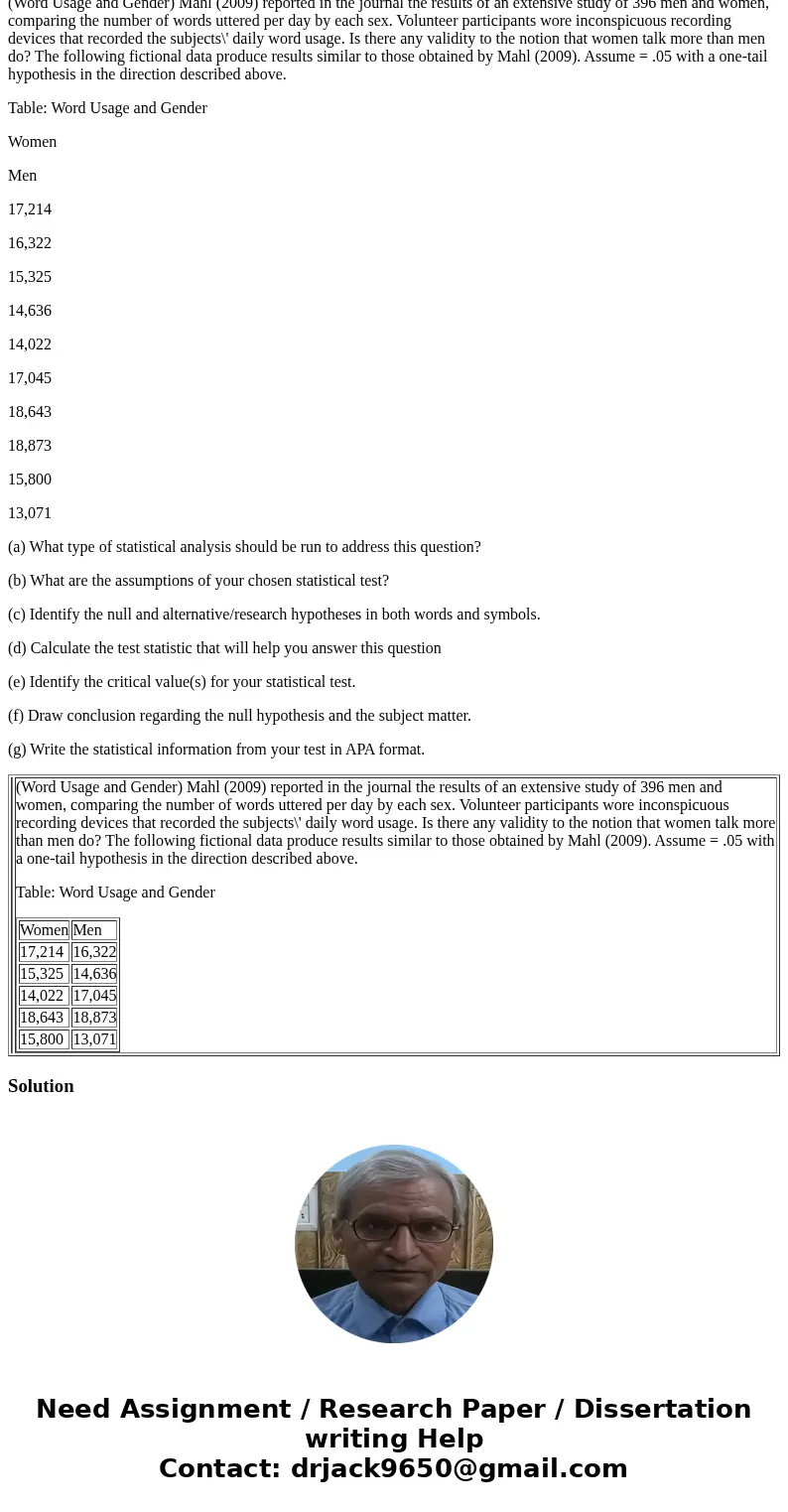Word Usage and Gender Mahl 2009 reported in the journal the
(Word Usage and Gender) Mahl (2009) reported in the journal the results of an extensive study of 396 men and women, comparing the number of words uttered per day by each sex. Volunteer participants wore inconspicuous recording devices that recorded the subjects\' daily word usage. Is there any validity to the notion that women talk more than men do? The following fictional data produce results similar to those obtained by Mahl (2009). Assume = .05 with a one-tail hypothesis in the direction described above.
Table: Word Usage and Gender
Women
Men
17,214
16,322
15,325
14,636
14,022
17,045
18,643
18,873
15,800
13,071
(a) What type of statistical analysis should be run to address this question?
(b) What are the assumptions of your chosen statistical test?
(c) Identify the null and alternative/research hypotheses in both words and symbols.
(d) Calculate the test statistic that will help you answer this question
(e) Identify the critical value(s) for your statistical test.
(f) Draw conclusion regarding the null hypothesis and the subject matter.
(g) Write the statistical information from your test in APA format.
| (Word Usage and Gender) Mahl (2009) reported in the journal the results of an extensive study of 396 men and women, comparing the number of words uttered per day by each sex. Volunteer participants wore inconspicuous recording devices that recorded the subjects\' daily word usage. Is there any validity to the notion that women talk more than men do? The following fictional data produce results similar to those obtained by Mahl (2009). Assume = .05 with a one-tail hypothesis in the direction described above. Table: Word Usage and Gender
|
Solution


 Homework Sourse
Homework Sourse